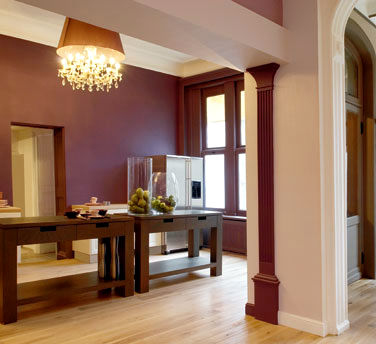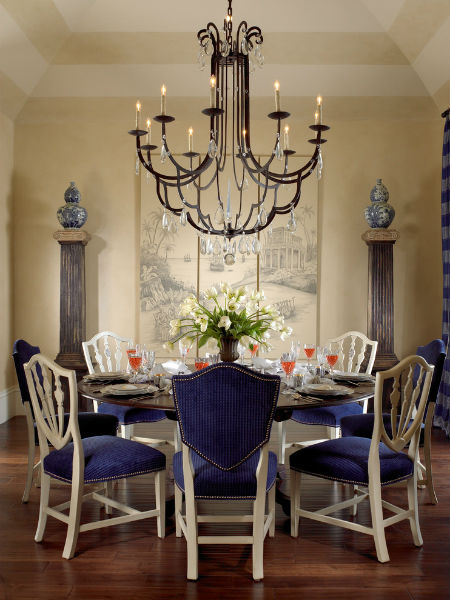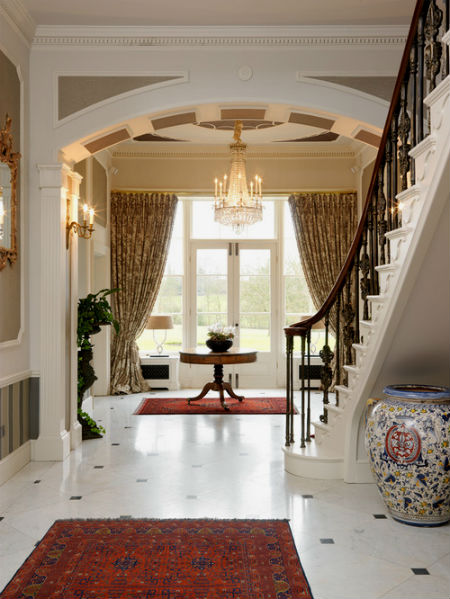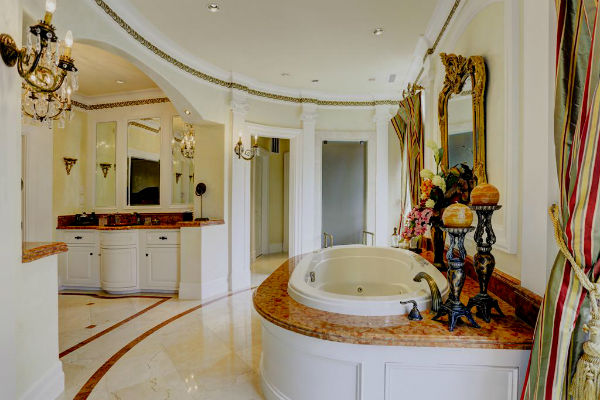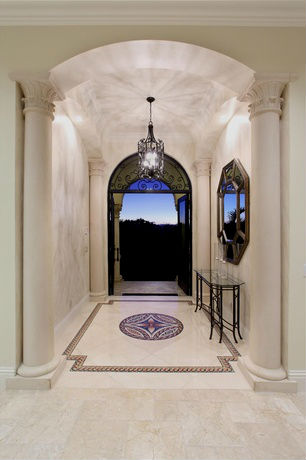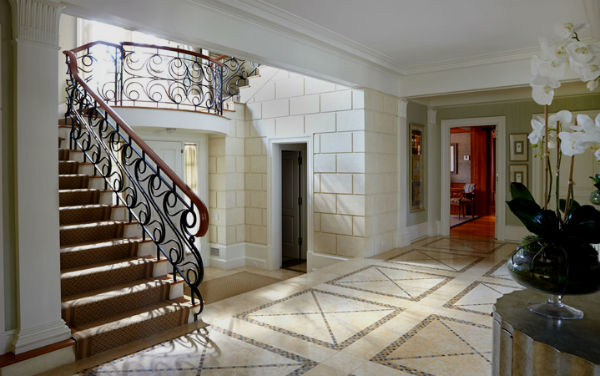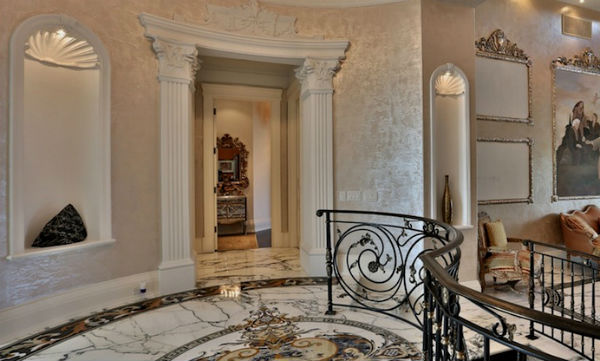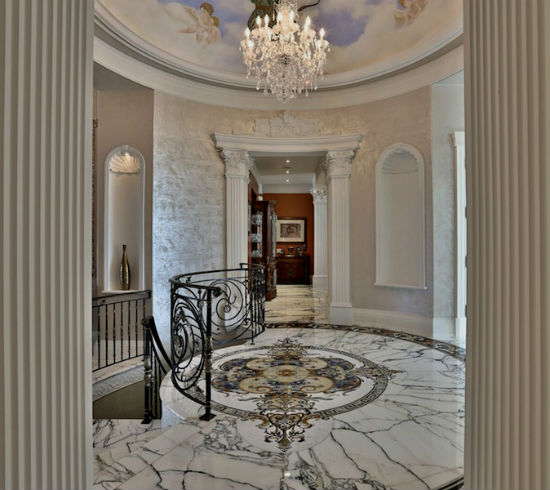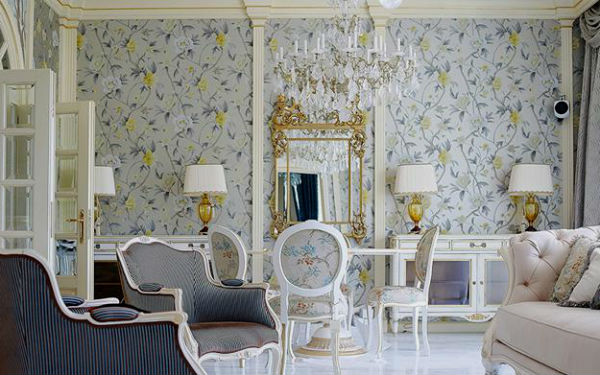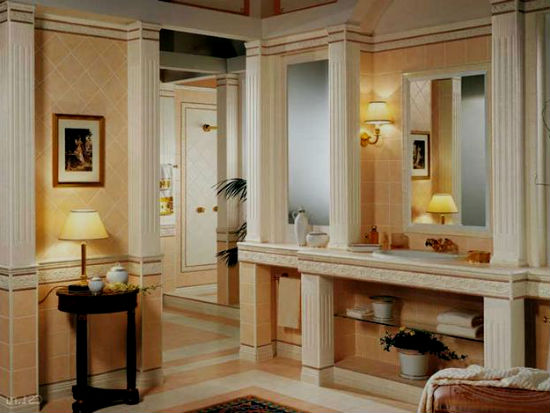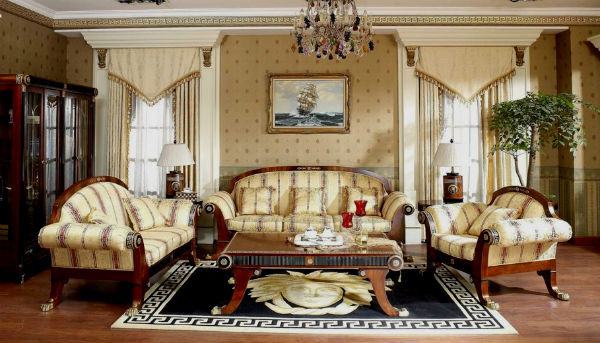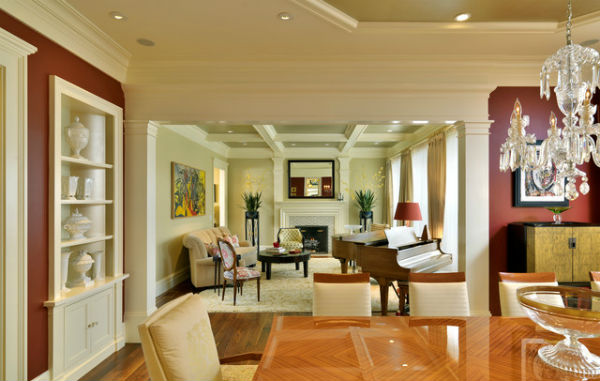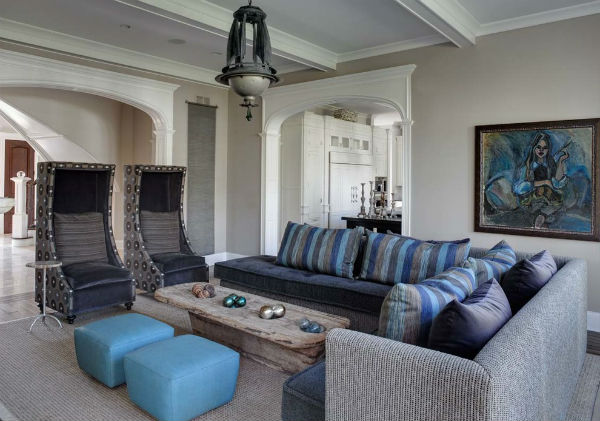Materials for the manufacture of designer columns
The choice of material for the construction of a structure depends on the aesthetic belonging and its purpose, therefore, one should take into account not only beauty, but the final result, which should harmoniously fit in and create integrity in the interior:
- natural stone or brick. These materials are very durable and are used to reinforce ceiling panels and door partitions. However, such structures are heavy, therefore, when erecting columns, their mass should be correctly calculated so that the load does not exceed architectural norms. Supporting elements are ideal for country houses and areas located on the ground floors. If only a decorative purpose is pursued, then an artificial stone can be used. It fits perfectly into the interior, light enough for the construction of structures of various shapes and sizes. Column decor in an apartment with stone cladding can be used in the embodiment of Scandinavian and loft styles. Also, natural stone will emphasize the sophistication and luxury of the classics;
- metal columns. The design will be appropriate in kitsch or minimalist styles. The reflections of the cold surfaces of structures will be an ideal addition to the interior, especially if you play on the color contrast of the walls and columns;
- wooden. It is a natural and durable material that has a unique texture and beauty. Wooden columns decorated with paintings or carvings testify to the well-being and refined taste of the owners. Such a classic fits perfectly and complements all stylistic directions;
- concrete structures. They are used to support ceiling tiles, and at the same time serve as a decor in the room. In the interior, it is not at all necessary to expose them to artistic decoration (which is ideal for the embodiment of the loft style). However, such elements are heavy, so it is not recommended to use them in apartments;
- gypsum plasterboard columns. A popular material among many designers, as it can be used to easily transform a boring interior into a modern and sophisticated space. Facing can be done with artificial stone (for imitation), mosaic of ceramic tiles or gypsum bricks, veneer, complementing the structure with molding;
- polyurethane structures. It is a flexible material with a dense structure that is widely used in design projects. Real artistic masterpieces are made from it, as you can create unusual shapes. Decorative polyurethane columns in the interior of a house or apartment make the atmosphere unique.
Advantages of polyurethane stucco molding
Initially, the stucco molding was made of plaster. The products had a decent appearance, but their disadvantage was the presence of restrictions in use. Polyurethane stucco molding, unlike its progenitor, has a number of positive qualities, such as:
- High decorative properties with many variations of performance;
- Practicality - polyurethane is resistant to mechanical and climatic influences, due to which it can serve for quite a long time (and after several decades it will not lose its original appearance);
- Absence of manifestations of yellowness and shedding;
- Moisture resistance - the material is not afraid of moisture, therefore, various decorations from it can be placed in kitchens, bathrooms, as well as on open facades of houses;
- Ease of installation work - you do not need a special set of tools to make a decor from polyurethane stucco molding. At the same time, if the decor is tired and needs to be replaced, it can be easily removed and a new one issued.
In addition to the considered arguments, one can also note the low cost of the material, which allows anyone to purchase decorative elements to fill their home with sophistication. As for the shortcomings, it is worth noting here the weak resistance to high temperatures, as a result of which the material begins to melt, so you need to be extremely careful when placing the decor in fire-hazardous rooms (it is not recommended to mount the stucco over the stove).


Appointment in a modern interior
Many are surprised why columns in the interior are still actively used by many designers. The answer to this question is very simple - even the most ordinary room can look completely different if it contains at least half-columns, not to mention a full-fledged element. It takes on shades of antiquity and nobility. It is especially successful to use this technique to demarcate a vast space, which includes several functional areas. The role of load-bearing or decorative elements is also very easy to bring to life with the help of columns. Let's take a closer look:
Support function. When redeveloping, many dismantle the interior partitions, freeing up more free space, thereby violating the original idea of the builders. To avoid collapse, use columns to support floor slabs. You will both delineate the boundaries of several rooms, and perform the support of the ceiling, and bring a unique sophistication to your new interior. Support columns must be made of strong materials and have sufficient diameter. You can use brick, stone, concrete or metal.
The decor of any room is very easy to diversify and refine by decorating it with columns. In the interior, it is better to use double elements, that is, depending on the area, two or three structures can be located in one room at once. They must be made in the same style.
So they will create a single harmonious composition, and not drag attention from one to another. It is very interesting, but not so pretentious, the semi-columns look, with which, for example, a beautiful sofa in the living room or a sleeping place is framed
Remember that having conceived to build such a binding element in your walls, you need to start with it, and only then select the appropriate furniture and decoration for the entire room. If it happened that first you made a repair, and then decided to supplement it in such an unusual way, then be sure to coordinate their appearance with the style of the room.
Zoning with arches or partitions is used everywhere, but rooms separated from each other by a colonnade are rarely found in ordinary apartments. Colonnades are usually called a group of small neat columns that are placed on one line and made in the same style. The dining room, separated in this way from the living room, will become the center of attention of all your guests. In addition, you can combine beauty and functionality and make one of the sides of the columns, which is directed towards the inside of the dining room, with small cabinets hidden inside for storing spices, small dishes and other things needed on the farm. And if a bar is adjacent to one side of the structure, then you can make open cells in it for storing wine bottles or glasses, place lights or bar accessories. In the same way, the loggia is separated from the bedroom, allowing the sun's rays to penetrate the room to a greater extent.
We hide the flaws. Modern apartments are equipped with a wide variety of appliances.Obviously, in such a situation, a lot of electrical cables will be laid out throughout the house, which must be carefully torn off, since they greatly spoil the aesthetic appearance. False columns, which are made of wood or drywall, will come to your aid. Such elements, as a rule, have an internal frame to which the wires are attached and are equipped with a door. Semi-columns on both sides of the TV zone will perfectly hide everything that is unnecessary.
As you can see, the application is very diverse, and can combine several functions at the same time, so do not neglect this type of interior decoration. Just keep the proportions and remember that this is a great option for rooms with low ceilings. After all, the columns are nothing more than vertical lines that visually expand the space and make it taller and more spacious. Colonnades of subtle elements of light shades do an excellent job with this.
Varieties of designs
In order for all the details of the interior to be perceived correctly and correspond to the style, it is necessary to correctly choose the material from which the columns will be made. There are many such materials, it can be:
- a natural stone;
- metal;
- wood;
- gypsum or drywall;
- polyurethane.

Columns as a decorative element in a private house
Natural stone means granite, marble, basalt, malachite. Such architectural works of art can be seen in museums, theaters, exhibition galleries, luxury restaurants and five-star hotels.

Zoning with massive stone columns
Huge, luxurious pillars are placed in the center of the halls, while less bulky pillars are usually erected at the entrance to the building. For a private house, columns made of natural stone are a luxury, so only a very wealthy owner can afford them.

Stylish marble columns in the interior
Metal structures are much cheaper, build quickly and can be of any shape. As a rule, such columns decorate high-tech or minimalist interiors. For these design directions, practicality is inherent, first of all, and the aesthetic component is already in second place. What other material can boast of high strength and reliability if not metal?

Painted metal columns add a touch of flavor to the interior
Wooden decorative columns in the interior are close in spirit to ethnic styles - country, Provence and eco-style. Carved columns will take a worthy place in a house where any of these interiors reigns supreme. First, the columns are installed, and the rest of the components are already chosen for them:
- finishing;
- furniture;
- Scenery;
- textile;
- accessories.
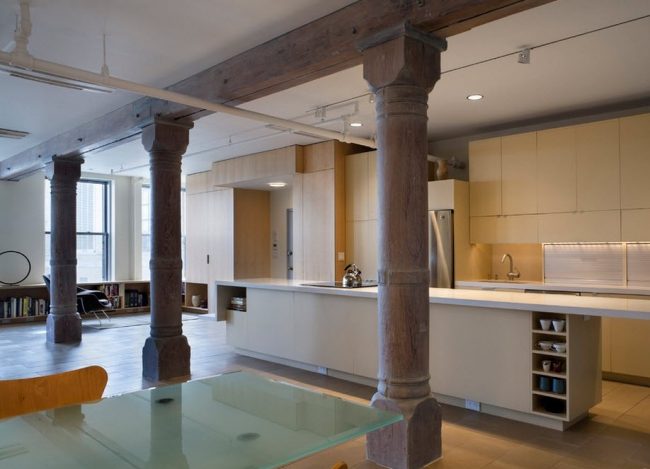
Unusual wood columns
Plasterboard structures are built very quickly. Having a design project in hand, the owner can create such a column on his own, since the material allows you to create real masterpieces. The plasterboard pillar will become a worthy decoration of the living room, nursery, library.

Small plasterboard columns in the hallway of a private house
The plaster architectural elements of the interior are classics of the genre. It is with this material that professional designers like to work most of all. Gypsum can be easily restored, thanks to which it is easy to give a structure damaged from time to time, as a result, it cannot be distinguished from a new one.
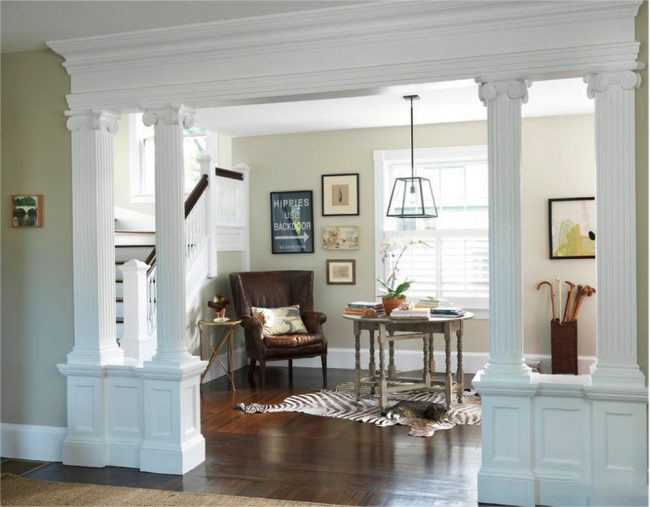
Plaster patterned columns will highlight the hallway area

Gypsum is a very plastic material, so there are no restrictions in terms of shapes and whimsical elements for it. If in the process of work the master made a mistake, it can be quickly corrected by sanding or applying a new layer.

You can make any pattern on a gypsum column and give it any shape
Columns made of polyurethane in the interior deserve special attention. The material has significant advantages, including:
- low price;
- light weight;
- ease of processing and installation;
- reliability and durability;
- resistance to sunlight, moisture and temperature extremes.

Classic gypsum columns
Polyurethane capitals can be given the most bizarre shape and decorated with all kinds of ornaments. Polyurethane foam vertical structures are notable for the fact that they can be painted in any color. The material today is very popular not only among eminent designers, but also among those for whom this activity is still new. This is due to the ease of handling polyurethane and its versatility.

Patterned columns in the interior of the oriental style

Polyurethane columns in the entrance area of the house
Functional application
There are several ways to fit a support column in the house into the interior:
- Decorate the structure in the general style of the room.
- Hide these elements completely or make them functional.
- Perform zoning and clear organization of space.
The use of these elements in a room can visually increase its height.
Column decoration
Decorative interior columns are becoming more common. But the supporting structures, which are an integral part of the room, can be turned into beautiful interior accents.
- Painting can be done to match the rest of the finish, or be done in a contrasting color. Depending on the option chosen, you can organically fit the elements into the overall style of the room or highlight them as bright accents.
- Surface painting is perfect for both oriental styles and modern Art Nouveau.
- Facing with decorative or natural stone. In industrial styles, aged brick tiles are often used.
- Aging wood or metal products will fit well into the old atmosphere of the room.
- Illumination of structures will emphasize their beauty and originality, give the whole space an unusual look.
The type of finishing is chosen depending on the material of the columns, as well as the general style of decoration.
Hidden columns
Sometimes the owners of apartments and houses are forced to put up with the presence of a column as a supporting structure.
But if it is not needed as a room decor, then it can be hidden in various ways:
- Build shelves or racks around so that it is not visible.
- Install cabinets that completely cover the structure.
- As an option: finishing with mirror elements, which will not only hide the column, but also visually expand the space.
A column hidden in this way will not attract attention, and will participate in the overall design of the room.
Zoning of premises
How to beat the column in the interior? Using this item, you can zoning various rooms. These elements can arrange and organize well any space.
At the same time, they do not limit visibility across the boundaries of the zone, the room does not become smaller. This is what distinguishes them from various kinds of partitions or massive structures. The use of arches between products adds more clarity and uniqueness to the zoning.
Quite often, low cabinets, partitions, benches are installed between paired elements. This makes their use more functional, and at the same time does not overload the space, zoning it as clearly as possible.
Zoning in a room can be done either by columns alone or in combination with zoning in other ways.
Non-standard solutions
Often, owners are not satisfied with the standard solutions for arranging a space using columns. In this case, there are a lot of different ideas and design examples that can make any room original.
Styrofoam interior columns - unusual, cheap and fast! Such items can be easily replaced if they get bored. It is quite easy to rearrange them to another location.
The original option is such a decor made of glass. The beautiful glass columns are filled with liquid with air bubbles. A separate point is the option of various lighting for the columns.
The use of colored lights can make the design of an entire room look fantastic. This accent is perfect for high-tech style. These products can also be completely camouflaged with live greens, creating a vertical mini-garden in the house.
The design of the columns in the interior can be completely different: from the bright accent of the entire room to the rough concrete finish. It all depends on the desire, imagination and style of the room.
p> The main thing is to organically fit this detail into the overall design. You can see more information and ideas for your home in the video in this article.
The use of semi-columns in the interior.
• Nowadays, half-columns often perform a decorative role, but sometimes still a functional one, because behind them you can hide impartial water pipes or electrical wiring. Be that as it may, they look great, bringing notes of symmetry and classics to the design of the room. In addition, pilasters, due to their accent ability, can allow to visually divide the room into certain zones, this technique will work in large rooms that perform a double function, for example dining-living rooms or kitchen-living rooms.
• In addition, unlike their direct relatives - full-fledged columns, pilasters significantly save space, practically not wiping out precious space. But at the same time, they can help to visually adjust the proportions of the premises, for example, an elongated long room with columns installed in the center of opposite long walls will seem proportionally more correct.
• The semi-columns also highlight the fireplace area, bringing something new and visually pleasing to the design of the room. Semi-columns with a capital decorated with stucco elements look very impressive.
• Often semi-columns are installed in rooms decorated in eclectic, antique and classical styles. They bring that missing and finishing touch to the interior design.
• Often, half-columns are installed in order to create the authenticity of a historical image; a vivid example is a wall fresco with a worn effect in the frame of such pilasters. This technique allows you to create the effect of a suddenly discovered ancient fresco on the inner wall of a house being renovated.
• Semi-columns can frame the window opening, then curtains with spectacular lambrequins look even more amazing.
• Semi-columns often frame arched doorways, in which case the capital is replaced with a full-fledged arched element.
• Wooden semi-columns are often found in furniture making, often mounted on the sides of cabinets.
 Semi-columns in the interior, photo.
Semi-columns in the interior, photo.
 Semi-columns in the interior, photo.
Semi-columns in the interior, photo.
How pipes are hidden in polyurethane columns:
The semi-columns in the interior are designed to emphasize the classic belonging of the design of the room, helping to correctly beat the overall interior idea, while looking incredibly aesthetically pleasing, effective and harmonious.
The Decorol website invites its readers to subscribe to receive news, the subscription form is located in the sidebar.
Gypsum
Ecological, maximally resistant to temperature extremes. During hardening, the mass of gypsum becomes larger, has properties even to penetrate into small cracks. The plasticity of this material facilitates the workflow associated with plaster decoration.

Gypsum is not difficult to process, it is for this reason that the finished product is not difficult to give the required size. When working with stucco from this material, you can mask surface defects, as well as various damage to elements that often appear during transportation.


Plaster cladding has its drawbacks: considerable weight, which negatively affects the durability of the finish. Also, gypsum does not repel moisture, but attracts it, which leads to the formation of fungus on the relief.

You can get rid of such a disadvantage if you apply a special protective agent to the stucco molding.
How to hide a column that is not needed
The design features of some buildings require a large floor area with a small number of partitions and load-bearing walls. Under such conditions, it is difficult to do without a support such as a massive column in the middle of the room. If the column does not correspond to the general style of the room, it makes sense to decorate it.
 Mirrors on the surface of the column will "dissolve" the inconvenient pillar in space, and add volume to the entire room. An original solution would be to turn the column into an interior item - a cabinet with shelves or a niche, a support for the back of a sofa or bench, a curbstone for decorative items. The ubiquitous drywall will help hide an unwanted element under any intricate shape.
Mirrors on the surface of the column will "dissolve" the inconvenient pillar in space, and add volume to the entire room. An original solution would be to turn the column into an interior item - a cabinet with shelves or a niche, a support for the back of a sofa or bench, a curbstone for decorative items. The ubiquitous drywall will help hide an unwanted element under any intricate shape.
 The interior of a room with columns will always be more advantageous in relation to an interior without them. If the area does not allow to place full-fledged columns, use half-columns, they will not take up much space, but will fulfill their decorative function.
The interior of a room with columns will always be more advantageous in relation to an interior without them. If the area does not allow to place full-fledged columns, use half-columns, they will not take up much space, but will fulfill their decorative function.


After comprehending the ideas of ancient architects, choosing the appropriate modern technological materials, the gray concrete-glass building can really be turned into a luxurious palace, an oriental harem, a brutal loft or ... a beautiful garden.
 So what is the secret of using columns in the interior? They add volume, transform a flat image into 3D, create a stereo effect, set the rhythm to the space, and therefore make the interior lively and real.
So what is the secret of using columns in the interior? They add volume, transform a flat image into 3D, create a stereo effect, set the rhythm to the space, and therefore make the interior lively and real.
Polyurethane stucco molding in the interior
One of the important advantages of this material is its great variety, which allows you to form decoration: arches, cornices, columns, etc.
Eaves
Cornices are a kind of skirting boards for the ceiling surface, decorating its joints with the walls. They can be smooth or have various ornaments and patterns. In this case, special cornices are often used. Made from flexible polyurethane, which contains rubber, they give you more flexibility to create different curves, as they can take almost any shape.


Moldings
Such a beautiful word is called stucco decorations for walls or ceilings, the main task of which is to mark borders, decorate the joints of different materials or edging inserts. Moldings in modern interior styles usually have a simplified look without unnecessary patterns and ornaments, in contrast to the classic chorus.
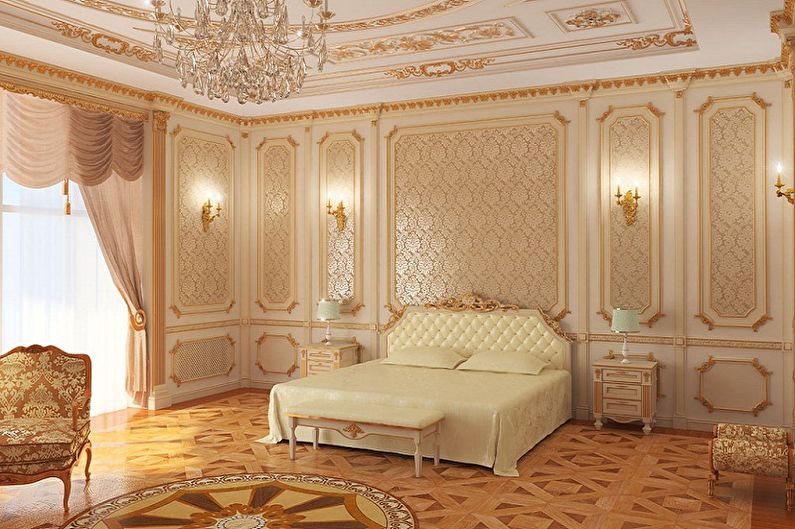
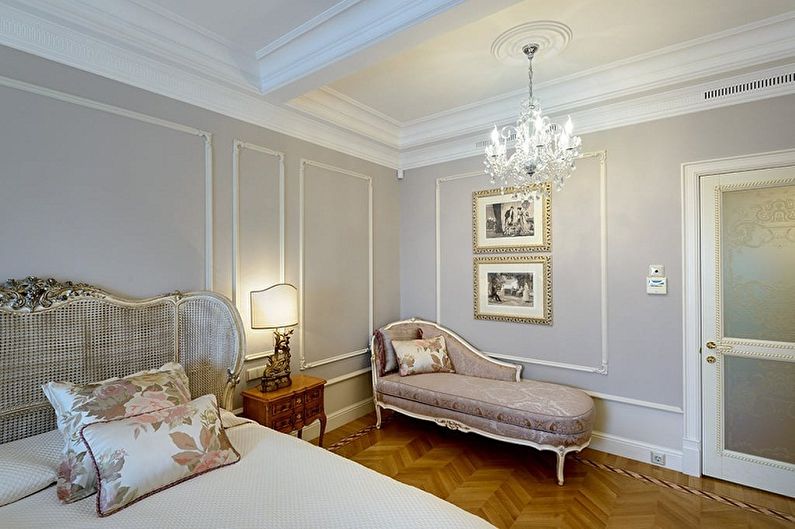
Friezes
Friezes can be wall or ceiling. In any case, they are rather wide (15-30 cm) stripes containing patterned compositions. They significantly decorate surfaces, give them grace and lightness.
When choosing, it is important to choose frieze patterns that will best match the style of the interior
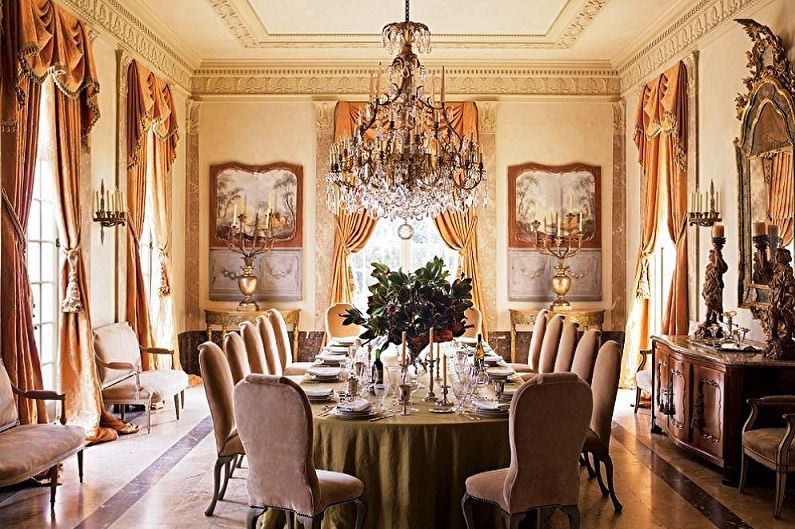

Small capitals
This type of jewelry is considered quite complex. Having the appearance of a supporting element, such polyurethane stucco molding is actually not able to withstand a lot of weight, but its strength is quite enough for installing a small decorative lamp or vase. Often, capitals play a purely decorative role, especially in classical, baroque and antique interiors.
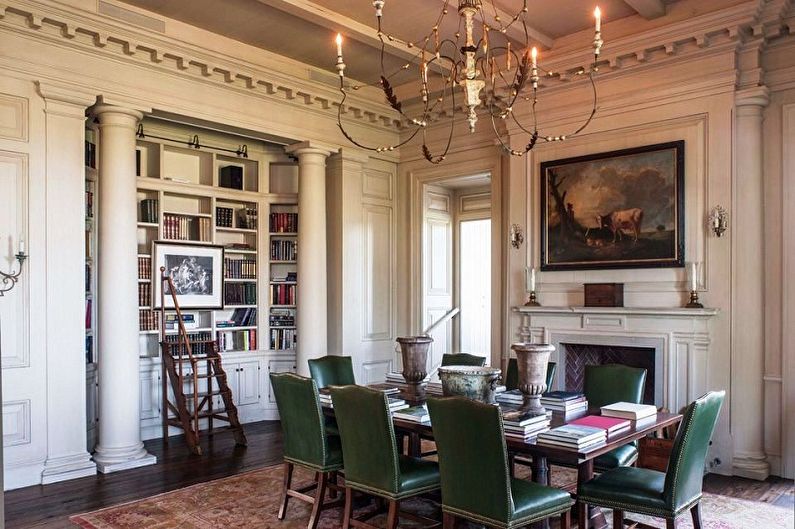

Pilasters
Such elements look like slightly convex semi-columns. Due to their small thickness, they do not clutter up the space at all, but give it some notes of grandeur. In addition, pilasters often take an active part in dividing space into functional territories.


Sockets
Since a central ceiling lamp in the form of a chandelier exists in many apartments, you can pamper it with additional decoration by decorating it with a rosette. This element, like no other, will be able to emphasize the dignity of the chandelier, its beauty and grace. The most popular rosettes are round, but other options are available on request. In addition to the decoration, the rosette perfectly “disguises” the points where the lighting fixture is attached to the ceiling.

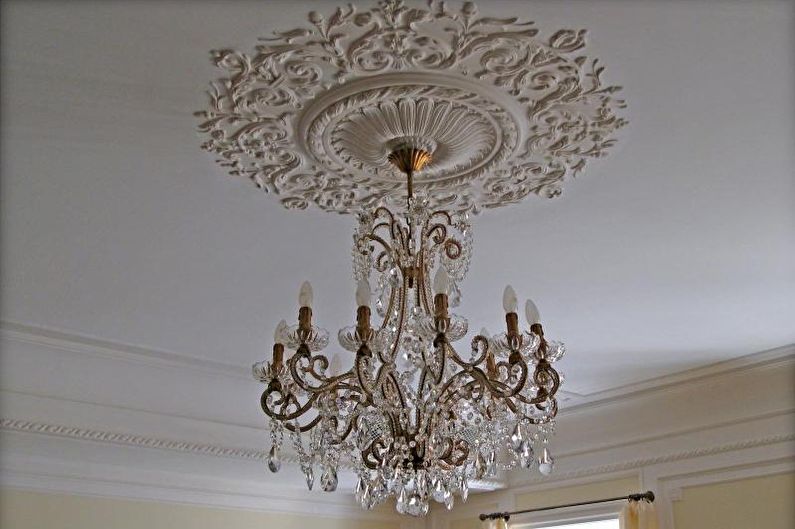
Brackets, pedestals
As for the first elements, they are reliable supports for shelves with books, window sills. Can be equipped at the joints of wall and ceiling surfaces in the form of corner pieces.

Pedestals are considered as supports for decorative accessories. Such stucco molding can withstand a load of no more than 50 kilograms. The usual details placed on the pedestal look exclusive and meaningful.


In the process of installing such parts, it is important not to forget about their proportionality in relation to the size of the room. Massive stucco molding on the wall surface will visually narrow the room, and on the contrary - small stucco molding can easily get lost in a large space

Styles
Columns can be used in different interior styles. The most popular, of course, is the classic one. Here you need to choose natural materials, and of course wood is the best option. The style maintains strict and regular forms, smooth lines. Products can be either smooth or patterned. Carved bas-reliefs and richly decorated capitals look very interesting.
In addition to the proven classics, the columns have found their place in many stylistic directions.


Modern style
Most modern styles are minimalist and functional. Columns should not stand out from the overall interior design. The best materials will be drywall, polyurethane, mirror finish, acrylic glass. Pretentiousness must be completely removed: such columns should be strict, laconic.
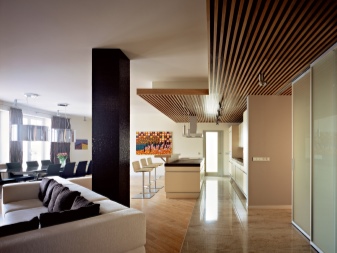

Art deco
This is a style in which antiquity is successfully combined with modern trends, as well as with baroque. Therefore, the columns in this direction should be strict, restrained, preferably white or ivory, but decorated. In most cases, plaster stucco molding is used as decoration.
Baroque
Baroque is a pretentious, somewhat pretentious style that implies wealth and luxury. For it, you should select spectacular columns made of expensive materials, for example, stone or marble. In addition, the structures should have a beautiful decor, and the capital should be especially richly decorated. The use of patterns and gold paint is encouraged.
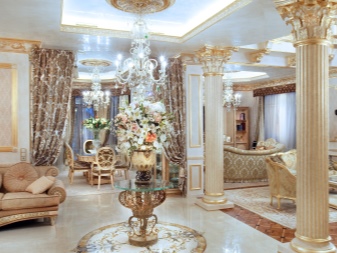

Retro
This style involves the use of contrasting shades that protest against the gray and dull everyday life. In this case, the most common colors are black, white and red.

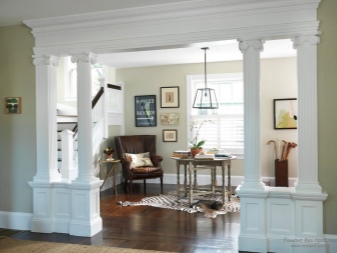
High tech
The direction of high-tech with its chrome cool shine has recently been chosen by more and more apartment owners.
If we talk about columns that are suitable for this style, then it is important to note metal structures or models sheathed with metal panels. They will successfully complement the overall design of the room.
In addition, acrylic glass will look good.
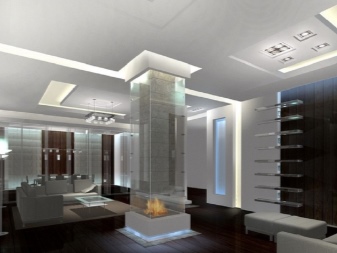
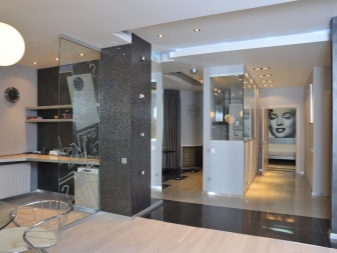
Loft
In the loft style, columns will be one of the most interesting solutions. It is here that concrete structures will be appropriate, creating the impression of incompleteness, which is characteristic of the style. Brick pillars look no less creative. The main thing is to create the illusion of carelessness, easy abandonment. From the colors it is better to choose restrained tones: gray, beige, but brown colors are also welcome.
Provence
Columns in the Provencal style should be light, airy. Of the shades, white or ivory is suitable.
There should be few adornments, but they can take place. For example, Provence-style columns can be beautifully decorated with flowers.
In addition to the directions already described, columns can be used in other styles:
- antique;
- Egyptian;
- modern;
- country;
- empire


Designs and functionality
Columns in buildings can serve two main functions: a load-bearing support that supports the floor, and a decorative item in design. In addition, their presence allows you to divide the premises into zones. Hollow parts can hide various utilities, such as electrical wiring.
If the presence of these details is laid even at the stage of building design, then they can be used functionally. At the stage of renovation or finishing, modern-style apartments are most often decorated with decorative items.
The number of such items in the room may vary, but usually these are:
- Single columns - most often they perform a purely decorative function. They are used as a design accent. They can also be given a practical meaning - to make a rack or hide the wiring.
- Paired columns - often mounted at the entrance to a room, near window openings, near stairs. Arches and beams are sometimes used to connect them and create a solid structure. The space between the two columns can be combined to create: an island in the kitchen, a shelving unit, a partition between zones, or a bench.
- A system of several pieces - a colonnade. It is usually installed in one row. In addition to the functional role, it often performs constructive zoning of the room.
- Semi-columns are parts of solid products protruding from the walls, or decorative details. Polyurethane products are quite common, which are easy to install anywhere in the room. Decorative details of semi-columns can also be used in small rooms.
Initially, circular cross-section structures were used. Currently, you can find products of other forms:
- Square;
- Rectangular;
- Multifaceted;
- Various curved products.
In addition, they can have a smooth or textured surface.
Structurally, classic models consist of three parts:
- The lower supporting part is the base.
- The middle part is the trunk of the structure.
- The upper part is a capital.
Currently, this is mainly the look of decorative columns in the interior. Initially, the lower and upper parts were richly decorated with various decorations, which was a kind of accent of the entire room.
 The classic model has three parts
The classic model has three parts
The column in the interior of the apartment can be inscribed in almost any style from classic to modern high-tech.
An era? Style? Direction?
Noble classics
The classic interior with antique columns is based on Greek samples - Doric, Ionic, Corinthian styles. The decoration of the base, body, capitals, not only has not changed, moreover, good taste requires strict adherence to Greek ideals.
 Antique Greek columns, half-columns are harmoniously combined with modern multi-level ceilings, lighting, polyurethane stucco moldings. Column decoration with Venetian plaster, marbled painting, natural stone is widely used by decorators. Columns are made of inexpensive materials - polyurethane foam, gypsum, concrete, then richly painted. This significantly reduces their cost and simplifies installation.
Antique Greek columns, half-columns are harmoniously combined with modern multi-level ceilings, lighting, polyurethane stucco moldings. Column decoration with Venetian plaster, marbled painting, natural stone is widely used by decorators. Columns are made of inexpensive materials - polyurethane foam, gypsum, concrete, then richly painted. This significantly reduces their cost and simplifies installation.
 The combination of two or more columns connected by an arched bend is especially fond of modern designers. Arches, in order to reduce the cost, to facilitate the construction, are made of plasterboard. Rectangular wooden columns, trimmed with expensive sorts of wood in the style of an English study or a Russian mansion, together with wooden panels on the walls, can be attributed to the same style.
The combination of two or more columns connected by an arched bend is especially fond of modern designers. Arches, in order to reduce the cost, to facilitate the construction, are made of plasterboard. Rectangular wooden columns, trimmed with expensive sorts of wood in the style of an English study or a Russian mansion, together with wooden panels on the walls, can be attributed to the same style.

Mysterious east
Impressive colonnades connected by arches are an integral part of oriental architecture.In contrast to classical restraint, the body of the eastern column is abundantly decorated with mosaics, ornaments, and bright colors.
 The arched curves are emphasized by additional lines, and are also richly and brightly veneered. Architectural ensembles with columns in oriental interiors are complemented by draperies from fabrics, carpets, stained glass windows.
The arched curves are emphasized by additional lines, and are also richly and brightly veneered. Architectural ensembles with columns in oriental interiors are complemented by draperies from fabrics, carpets, stained glass windows.

Modern interior trends
Minimalist style, hi-tech, loft - the columns are not bypassed. These styles assume a large free space, considerable height. Columns here act as floor supports. Most often, these are simple pillars, finished in accordance with the style of the room - metal (silver, nickel, chrome, copper), clinker "aged brick", concrete with traces of formwork. The latest trend is the use of backlighting in bubble glass columns.

Rustic styles
In the good old provence, Russian rustic style, and other ethnic styles, wood and rough natural stone are preferred for column decoration. The columns can be completely wooden, and the "stone" finish on various bases (concrete, polyurethane foam, plasterboard, false column) is made with materials that imitate stone.


Decorative columns in the interior: a photo of your choice
If you have a large usable space that you want to play up in an original way, then you can use decorative columns for this purpose. This stucco element works well both outside and inside the building. If you have a large open space on the ground floor of the house, then choose the installation of internal columns, which will be an additional decoration of the living room. Internal decorative columns are made of high quality polystyrene reinforced with plaster, making them durable and resistant to corrosion. When installing large items, it is worth using brackets so that they do not move before the glue used for assembly dries. As with other types of plastering work, the interior columns can be painted in any color using silicone paint. You will love this decorative element of your home, which will give the room a new and unique character. decorative columns are ideal for baroque-inspired arrangements.







Semi-columns as an element of the interior of an apartment
Are you running out of space in your home but want to install a decorative column? You can install the half-ramp on the wall or in the corner. This option will take up less space, because it is attached to the finished surface, but still gives the interior a three-dimensional impression. In addition, its style belongs to ancient Roman architecture. Plastering semi-columns are made of polyurethane material reinforced with plaster. Their assembly method is very simple. All elements of the base, shaft and head are connected using stucco glue. Before installation, the wall must be properly prepared, that is, cleaned and leveling flaws. Then you distribute the column elements evenly, resulting in a column that protrudes from the wall. It is an effective decorative element that emphasizes the character of a luxurious interior.


Pilasters in the design of the living room: material for the manufacture of a decorative element
Modern pilasters are made from a variety of materials. Previously popular were pilasters made of marble or granite. This testified to the good taste, wealth and well-being of the owners of the house. But not everyone could afford such products.
 Golden pilasters in the interior of a modern living room
Golden pilasters in the interior of a modern living room
Pilasters were made more readily available when plaster pilasters began to be made. This material helps to make any pattern on it, for example:
- vine;
- leaves;
- floral ornament.
Gypsum has the following characteristics:
- durability;
- fire resistance.
But on top of that it has a lot of weight, about the same as marble or granite.
 Pilasters allocated a sofa area in the decor of a modern living room
Pilasters allocated a sofa area in the decor of a modern living room
Increasingly, modern pilasters are made of polyurethane or foam. These materials are considered cheap and lightweight. This allows you to create a unique interior without unnecessary financial and labor costs. This option is suitable for those who want to decorate their home quickly, elegantly and inexpensively. Pilasters can always be given the desired color. To do this, simply paint them with any paint.
 Pilasters made of polyurethane with an original pattern
Pilasters made of polyurethane with an original pattern
Polyurethane pilasters are more commonly used than polystyrene pilasters. There are a number of reasons for this:
- strength;
- easy and quick installation;
- easy dismantling;
- a large selection of shades.
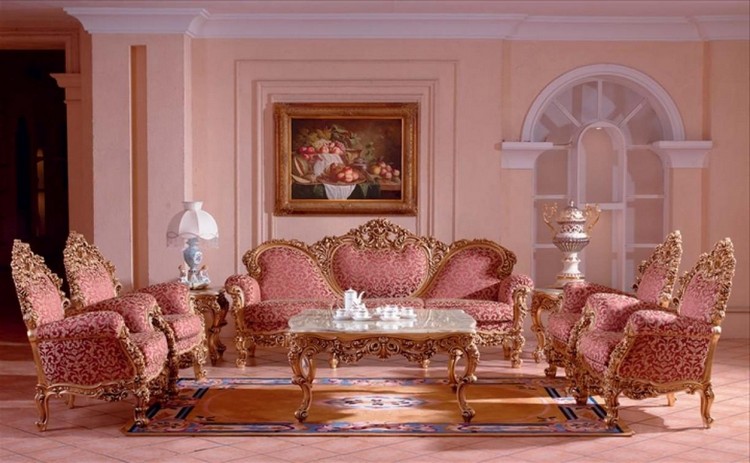 Pilasters in the design of the arches of the living room
Pilasters in the design of the arches of the living room
Plaster and marble pilasters are not subject to mechanical deformation. They recover easily even after a severe fire. Semi-columns made of these materials were most often seen in palaces and temples.
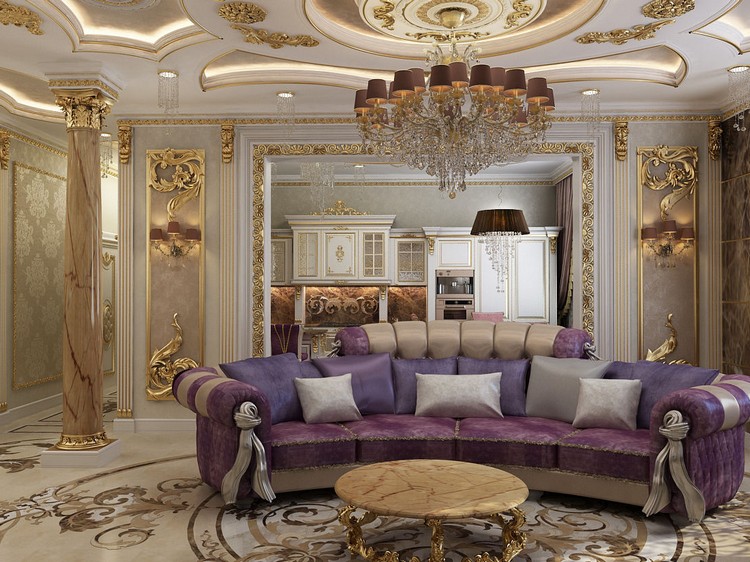 Antique columns and half-columns in the interior of a Greek living room
Antique columns and half-columns in the interior of a Greek living room



